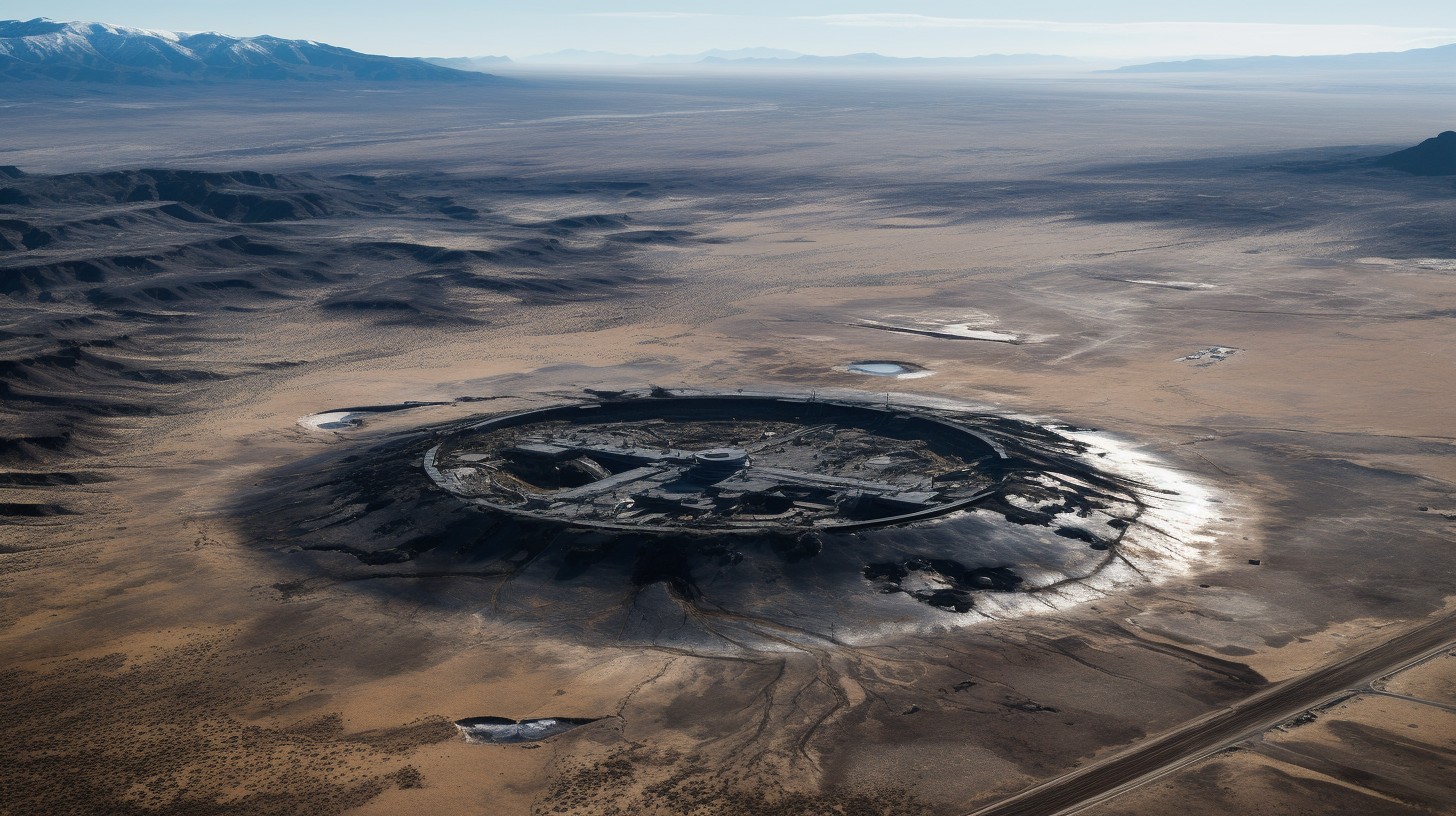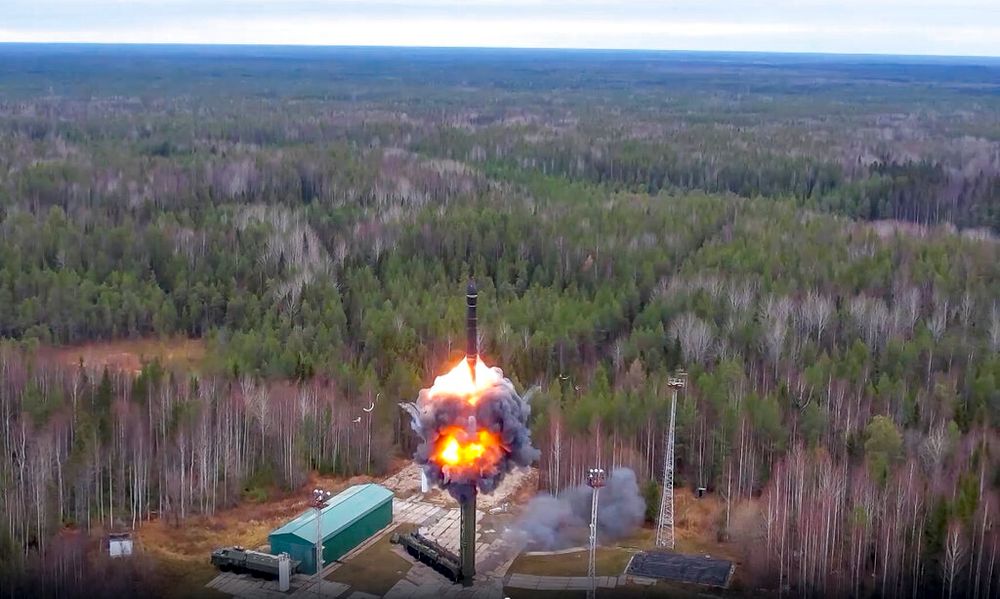Global Concerns Rise as Nuclear Test Site Expansions by Major Powers Ignite Tensions

Global Concerns Rise as Nuclear Test Site Expansions by Major Powers Ignite Tensions
In recent years, satellite images have captured concerning developments at nuclear test sites in Russia, China, and the United States, raising international alarm and exacerbating tensions among these major nuclear powers. The images, obtained exclusively by CNN, showcase significant expansions, including new facilities, tunnels, roads, and storage facilities at these test sites. While there is no concrete evidence indicating an imminent nuclear test, the observable enhancements have sparked apprehension due to the delicate geopolitical landscape. These revelations come at a time when global strategic stability hangs in the balance.
Growing Infrastructure at Three Major Nuclear Test Sites
The satellite images, spanning the past three to five years, provide a snapshot of extensive developments at three key nuclear test sites. China, situated in the far-western region of Xinjiang, Russia, on an Arctic Ocean archipelago, and the United States, nestled in the Nevada desert, have all demonstrated increased activity.
Jeffrey Lewis, a professor at the James Martin Center for Nonproliferation Studies at the Middlebury Institute of International Studies, examined the images and noted the presence of new tunnels beneath mountains, expanded road networks, and additional storage facilities. The augmented vehicular traffic in and out of these sites further raised concerns among experts.
The Absence of Imminent Tests but Growing Suspicion
While these developments don’t provide conclusive evidence of imminent nuclear tests, they cast a shadow of doubt, considering the historical significance of these sites and the strategic implications of their expansion. All three nations involved – Russia, China, and the United States – have not conducted underground nuclear tests since the 1996 Comprehensive Nuclear Test Ban Treaty, which banned such tests. However, both China and the United States have yet to ratify the treaty, leaving the door open for potential resumptions.
Retired US Air Force Col. Cedric Leighton, an experienced intelligence analyst, corroborated the concerns raised by Lewis. He asserted that the substantial investments made by these nations in modernizing their nuclear arsenals and the preparations evident in the satellite images suggest a readiness for testing.

Russia’s Assertive Stance and Global Strategic Parity
Russia, while having ratified the Comprehensive Nuclear Test Ban Treaty, has expressed a willingness to conduct a nuclear test if the United States takes the first step. Russian President Vladimir Putin, in February, stated that he would order a test in response to any U.S. initiation, cautioning against illusions that global strategic parity could be disrupted.
This stance by Russia adds fuel to the already tense global environment, as it raises concerns about a potential race among major powers to modernize their nuclear testing infrastructure. While a full-blown armed conflict is not imminent, the implications of such a competition are grave.
Implications of the Expansions and Global Concerns
The expansions witnessed at these nuclear test sites have far-reaching implications for global security and diplomatic relations. As major nuclear powers enhance their testing capabilities, it threatens to spark a costly and dangerous race, one that could destabilize the already fragile balance of power.
The United States, Russia, and China possess some of the world’s most formidable nuclear arsenals. The development of more advanced and potent nuclear weapons not only increases the potential for devastation but also complicates disarmament efforts and threatens the credibility of global nonproliferation agreements.
Moreover, the timing of these developments is particularly concerning. At a time when diplomatic relations are strained, and trust is at an all-time low, the expansion of nuclear testing infrastructure adds another layer of complexity to international relations.

The Significance of Ratifying the Comprehensive Nuclear Test Ban Treaty
The Comprehensive Nuclear Test Ban Treaty, which entered into force in 1996, is a crucial instrument for maintaining global peace and stability. Its objective is to prohibit all nuclear explosions for both civilian and military purposes. To date, 185 countries have signed the treaty, demonstrating a global commitment to nuclear disarmament.
However, the treaty’s effectiveness is contingent on ratification by the world’s nuclear-armed states, particularly China and the United States. Both nations have signed but not ratified the treaty, citing concerns about verification measures and the need to maintain the reliability of their nuclear arsenals.
The reluctance to ratify the treaty by these two nuclear giants has left the door ajar for potential resumptions of nuclear testing. The recent developments at their respective test sites underscore the urgency of ratification and the need for renewed international efforts to uphold the principles of the treaty.
The Dangers of a Renewed Nuclear Arms Race
The prospect of a renewed nuclear arms race is a nightmare scenario for global security. Such a race would divert resources away from addressing critical global challenges, such as climate change, poverty, and public health crises, while simultaneously increasing the risk of accidental or intentional nuclear conflict.
Moreover, the destabilizing effect of a nuclear arms race could extend beyond the three major powers involved. It could encourage other nations to pursue nuclear weapons programs, further eroding the international norm against nuclear proliferation. This could result in a more volatile and dangerous world, with the potential for regional conflicts escalating to nuclear confrontations.
The Urgency of Diplomacy and Arms Control
In light of these developments, urgent diplomatic efforts are required to de-escalate tensions and promote arms control measures. Dialogue between the United States, Russia, and China is imperative to build trust, increase transparency, and work towards the ratification of the Comprehensive Nuclear Test Ban Treaty.
Multilateral negotiations and agreements should also be pursued to reinforce the international commitment to nuclear disarmament and nonproliferation. The consequences of a renewed nuclear arms race are too dire to ignore, making cooperation among major powers an absolute necessity.

Conclusion
The recent expansions at nuclear test sites in Russia, China, and the United States have raised significant concerns about the potential for a renewed nuclear arms race. While there is no concrete evidence of imminent nuclear testing, the developments have sparked apprehension in a world already grappling with geopolitical tensions. The urgency of diplomacy, arms control measures, and the ratification of the Comprehensive Nuclear Test Ban Treaty cannot be overstated. The future of global security hangs in the balance, and the international community must work together to prevent a dangerous escalation of nuclear capabilities.




